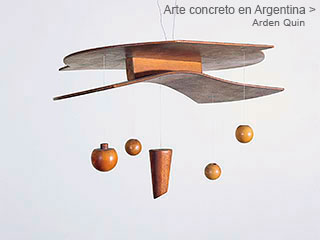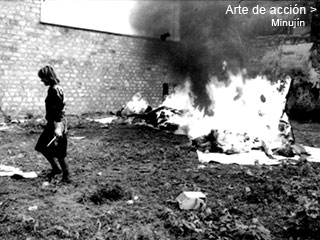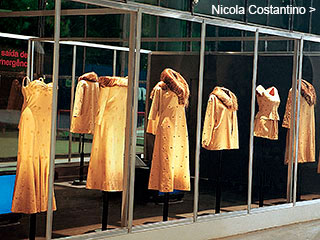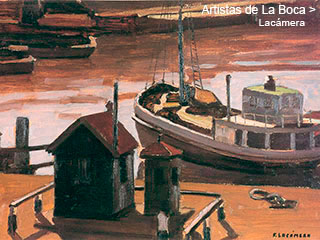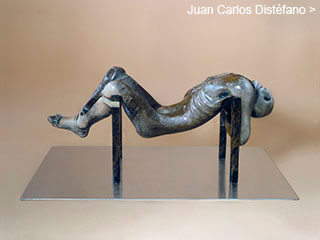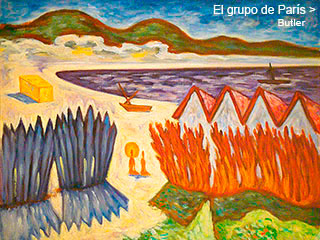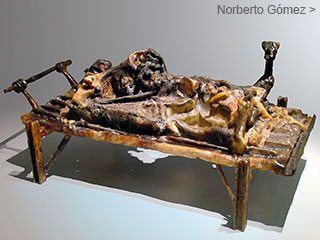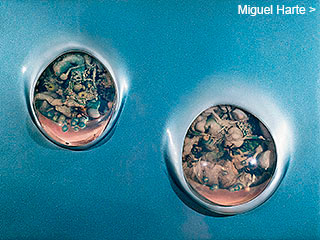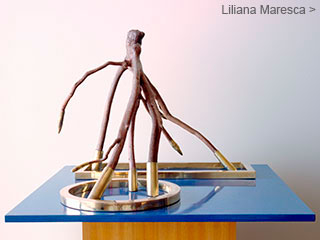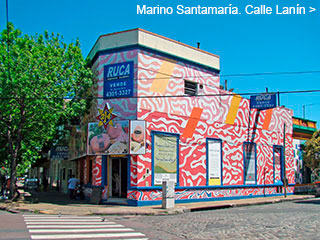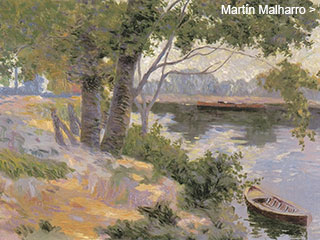Menú
Algunos dossiers
Concrete Art
in Argentina
in Argentina
by
Adriana Lauria
January 2003
January 2003
Abstraction asserted itself in Argentina through the achievements of groups such as Arte Concreto-Invención, Madí and Perceptismo, which developed their activity since the second half of the 1940s. These groups constituted the first organized national avant-garde and made their aesthetics known to the public through exhibitions, magazines, manifestoes, leaflets, lectures, etc.
On Concrete Art
The term “Concrete Art” was coined in Europe in 1930. It refers to a manner of abstraction that rejects any allusion to a model by resorting to geometrical forms and the analysis of plastic elements. At the same time, it endeavors to develop an objective composition system.
Thus, works created through the study of perceptual laws and the rational organization of their parts, are entities in themselves (i.e., concrete entities) and do not pose as representations of other objects.
The word “concrete” emerged at the core of a discussion revealing this artistic trend’s rigorous position concerning the terms and the conception of the artists’ work. In their search for the autonomy of art, painters rejected simplification and synthesis mechanisms still depending on motives and invented forms basking in their endless combinations.
Concrete Art confronted the spectator directly with the mechanics of visual language. Consequently, it opposed both the oneiric fictions created by Surrealism as well as the emotive ones born of Expressionism. Further, it radicalized its self-reflexive nature –an approach initiated by aesthetic modernity towards the second half of the XIX century– achieving “concrete” outcomes within the rules of their own system.
This attitude and the elements involved, connected the movement with design, architecture, machines and invention, creating an aesthetics that coherently articulated with the technical and scientific discoveries of the time. It was thus that art replied to the requirements of a new world and tried to foster a suitable environment for the emergence of a harmonious social organization.
In 1930, Dutch artist Theo van Doesburg published in Paris the unique issue of Art Concret magazine, a six-point manifesto that established the theoretical basis of Concrete Art –a calculated, logical art, which required the conception of a work “in the mind, before its execution.” In addition, he exhibited La composition arithmétique, a geometrical work with an order determined by logical relationships and deductive structures, applying the axiom that “the construction of a picture, as well as its elements, must be simple and visually controllable”.
By that time, the Alsatian artist Hans Arp stated that, “A painting or a sculpture not modeled from a real object is in itself as concrete and sensual as a leaf or a stone”.
The Swiss Max Bill, a former Bauhaus student, continued developing the principles of Concrete Art. He deepened the objective method of creation by using grids, modules, series, and arithmetical and geometrical progressions. In 1944, he organized an important international exhibition of this trend in Basel.
Bill’s theories then crossed the Atlantic to South America, spreading from Argentina –thanks to Tomás Maldonado and the Asociación Arte Concreto-Invención– to Brazil.
In 1944 the first issue of Arturo magazine in Buenos Aires announced the Concrete movement’s first expressions in the Río de la Plata area. Abstraction had been introduced in Argentina two decades before by Emilio Pettoruti and in Uruguay in the 1930s by Joaquín Torres García.
The first two organizations, Asociación Arte Concreto-Invención and Madí Movement consolidated between 1945 and 1946. In 1947 Perceptismo was born.
From that time onwards, the abstract geometrical trend became widely accepted in Argentina. Over the following decades it would give birth to strongly vital movements: Op Art, Kinetic Art and Primary Structures in the 60s; New Abstraction, Sensitive Abstraction and Latin American Constructivism in the 70s and 80s; Neo Concretism and Neo Minimalism in the 90s. Today, support for the movement can still be felt in the works of younger artists and in the renewed versions of its longtime worshipers.


